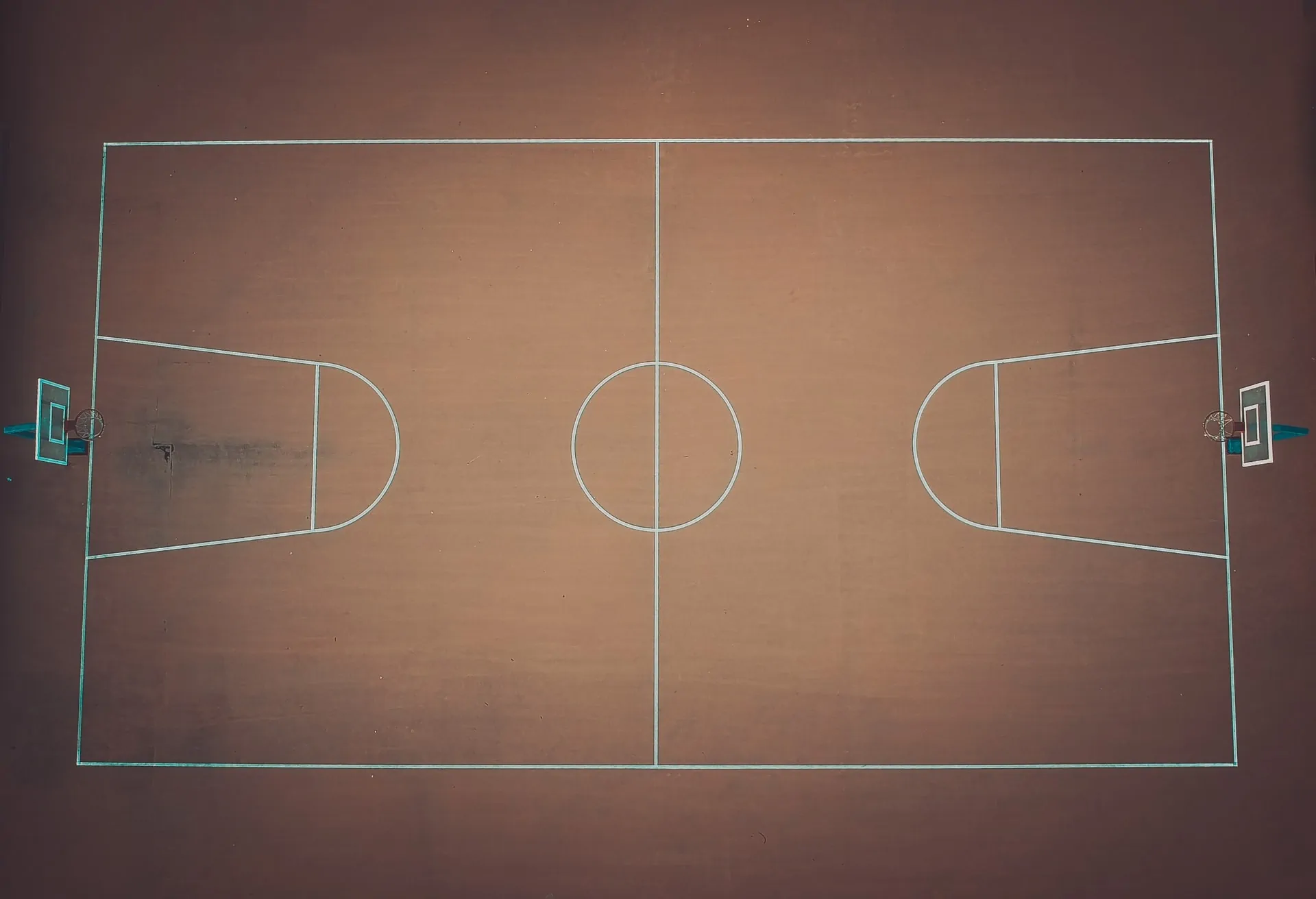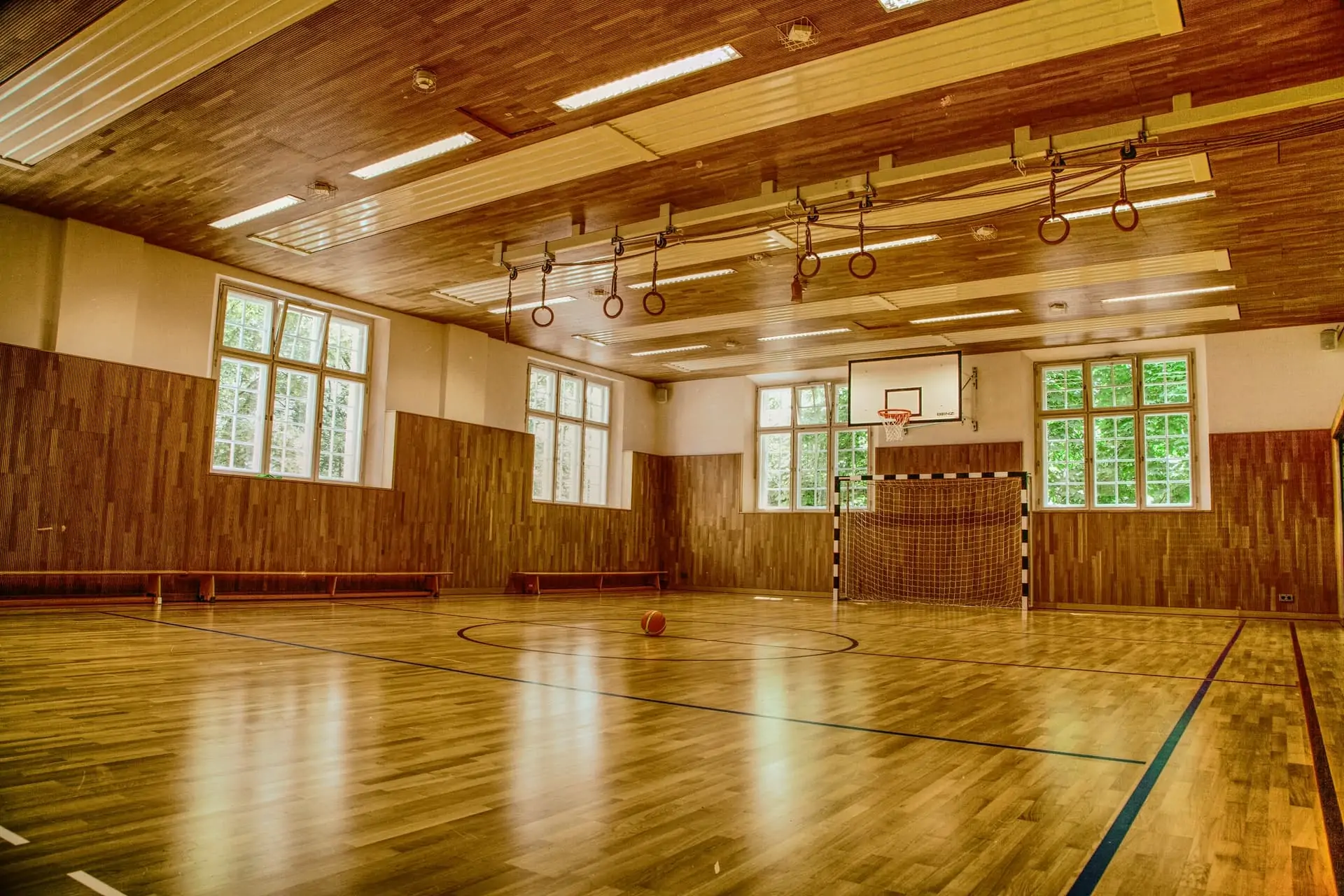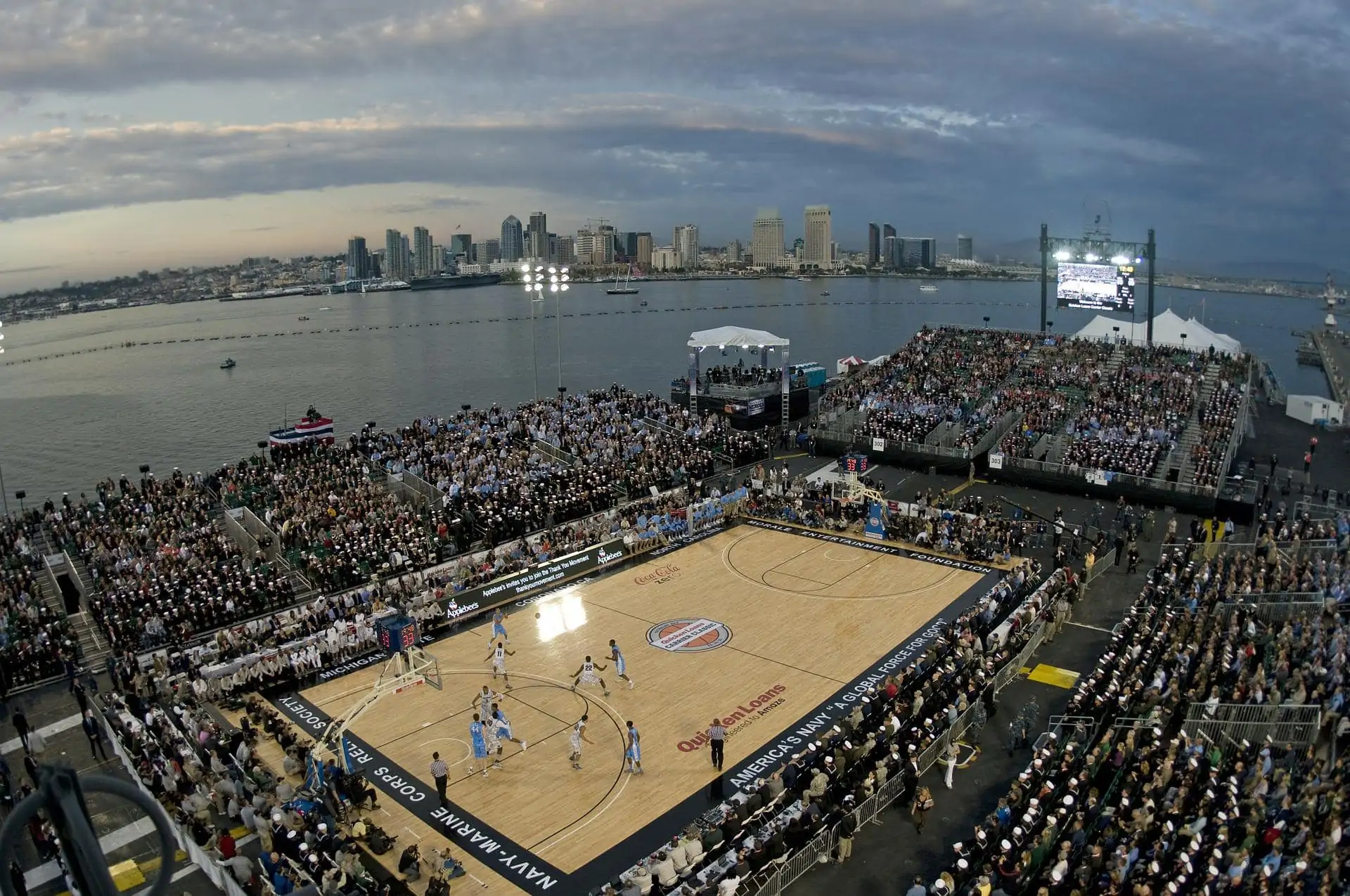Have you ever wondered how many square feet is a basketball court? Have you ever wondered how the size of basketball courts are determined? If yes, then this article is for you. You will find answers to your questions as you browse through this article.
The NBA basketball court covers an area of 4,700 square feet or 436.24 square meters. The NBA and college ranks use the same size basketball court. However, the size of the basketball court varies depending on the league.
Read on to gain more insights about basketball courts.
 History of the Basketball Court
History of the Basketball Court
In 1891, Dr. James Naismith, a Canadian physical education instructor at Springfield College, thought of indoor activity to get his students physically fit during the long winter months. Since modern athletic equipment wasn’t around, Naismith had to do with a peach basket for a hoop and indoor running tracks as the playing court.
There was no specific basketball court size in Naismith’s original 13 rules. The basketball court dimensions, length, width, hoop height, etc., adapted to the space where the game was played. There was no standard layout or surfaces of the court; it could be in a big room, a large field, or a lot, and whether it was on a smooth or uneven surface.
The popularity of basketball grew, and teams needed to play on a basketball court with a standard size.
In 1924 things changed; court sizes varied from a minimum of 60 feet by 3 feet to a maximum of 90 feet by 50 feet. A college exhibition game in 1931 had players injured playing on a concrete floor with a layer of canvas on top.
Before the official college basketball game was played in 1934, a 29-year old newspaperman Ned Irish, Madison Square Garden’s director of basketball, laid a gymnasium-type hardwood on top of a concrete floor. The hard maple surface was adopted for professional and semi-professional games.
The surface was used for pro games, but the dimensions of the basketball court evolved. The NBA widened the distance from the free-throw line to the basket to 12 feet and integrated the three-point line in 1979. The NBA expanded the no-charge zone in 1997 to protect defensive players from charging fouls.
Some basketball trivia from yesteryear that you might not know.
- The number of players can range from 5 per team to as many as 50.
- The ball was a soccer-type ball, and it was challenging to dribble or pass. Bounce passes were executed by players for the ball to change hands.
- Every time a basket is made, the game has to be stopped; a custodian uses a ladder to remove the ball from the peach basket.
- The bottom of the peach basket was removed; still, the ball had to be nudged by a dowel for every shot made.
- The first official basketball game ended with a score of 1-0 at the YMCA gym in New York with nine players on January 20, 1892.
 Types of Basketball Court Surfaces
Types of Basketball Court Surfaces
Basketball is one of the cheapest games to play; it requires a ball, a ring, and a flat surface. The surface impacts the game; it should provide a good grip for players, a good ball bounce, and resilience. Here are the best surfaces for basketball.
Hardwood
Hardwood surface is preferred by professional and college basketball players for indoor play. Maple is the most common hardwood surface; some use the hybrid maple-oak for the basketball floor. Maple is flexible, durable, and resilient; players don’t get injured when they kiss the floor.
Concrete
Concrete is best for outdoor play and requires minimum materials, equipment, and workforce to build. You can smooth out the surface for a fine consistency and apply acrylic paint to distinguish the free-throw line, three-point line, sideline, etc. Using vapor barrier and sealant makes concrete resilient to harsh weather conditions.
Asphalt
An option for concrete is an asphalt surface which requires professional installation. It is not as smooth as concrete but comes in different rock variants for surface types, from smooth to rough. You can use sealant for weather protection and paint basketball lines like concrete.
Sport tiles
Sport tiles are a modern choice for a basketball surface. You can join it to form a court, and an excellent solution for an uneven surface. Like maple hardwood floors, sport tiles are resilient; you can top your surface to protect players from injuries without compromising playability. Sport tiles can be removed during the off-season and withstand harsh weather conditions.
 What are the Basketball Court Sizes?
What are the Basketball Court Sizes?
The basketball court dimensions vary depending on the league. The dimensions of the NBA and college basketball are the same; and differ from leagues in high school, amateur, and international.
NBA and WNBA
The basketball court size in meter for both professional leagues is 28.7 meters in length and a width of 15.2 meters or 94 ft. (L) and 50 ft. (W).
The distance from the basket to the three-point line is 7.24 m (23 ft. 9 inches) for the NBA, while the WNBA has 6.75 m (22.15 ft.).
FIBA
The standard basketball dimensions of FIBA are a length of 91.9 ft. (28 meters) and a width of 49.2 ft. (15 meters).
Steph Curry will have a heyday shooting his treys; FIBA’s three-point line at the top of the key is 6.75 m (22.15 ft.).
NCAA and WNCAA
The basketball court size for both collegiate leagues is a length of 94 ft. (28.7 meters) and a width of 50 ft. (15.2 meters). The foul line’s distance to the backboard is 18 feet and 10 inches or 5.74 meters.
High School
The high school basketball court has a length of 94 ft. (28.7 meters) and a width of 50 ft. (15.2 meters). The separation from the backboard to the free-throw line is 18 feet and 10 inches or 5.74 meters.
The figures show that the basketball court size of the professional level is slightly bigger than FIBA and the same size as NCAA and WNCAA.
What are the Basketball Court Markings?
Fans, coaches, and players should have a common understanding of the markings on a typical basketball court to avoid confusion. Markings are as follows:
| Item | Marking | Description |
| 1 | Sideline | Boundary lines are found at the ends of the court. A player is deemed out-of-bounds by crossing or touching these lines, and ball possession is granted to the opposing team. |
| 2 | Endline | It runs behind the backboard and at the ends of the court. A player commits an infraction if they step or cross these lines. |
| 3 | Midcourt line | Located at the center of the court and is referred to as the timeline and half-court line. It is used to determine backcourt violations. Midcourt lines are divided into the frontcourt for offensive plays and the backcourt for defensive plays. |
| 4 | Three-point line | Shots made outside the arc are counted as three points. |
| 5 | Free throw line | A spot where the player will stand for a free throw, they cannot leave the line until the ball touches the rim. It is also used to define a three-second violation. |
| 6 | Free throw circle | Used during free throws and jump balls. A shooter must stay inside the circle during a free throw attempt. Players must remain outside the circle on jump balls until the ball is tapped. |
| 7 | Lane lines | Also called “the paint,” boundaries extend from the free-throw line to the end line. Non-shooters occupy the space markings. Non-shooters cannot step in the three-second area until the ball leaves the shooter’s hand. |
| 8 | Center circle | It is located in the center of the court to start a game and other jump ball situations. |
Wrapping Up: How Many Square Feet is a Basketball Court?
A basketball court layout varies in size based on the level of play. Playing college basketball on a court size of 94 by feet or 4,700 square feet is the same as the NBA’s.
Perhaps you don’t have the proper floor size or surface to play basketball. Fret not because constant practice, discipline, and focus will take your pick-up game to the next level.
If you found this post helpful, you’re definitely going to love our other basketball FAQ articles here.
> How Many Yards is a Basketball Court?
> How Many Laps Around a Basketball Court is a Mile?
> Why Do Double Rim Basketball Hoops Exist?
Want to get better at basketball?
Join our newsletter & get our comprehensive
101-page basketball guide.
Become a better baller today 👇


 History of the Basketball Court
History of the Basketball Court
 Types of Basketball Court Surfaces
Types of Basketball Court Surfaces
 What are the Basketball Court Sizes?
What are the Basketball Court Sizes?



